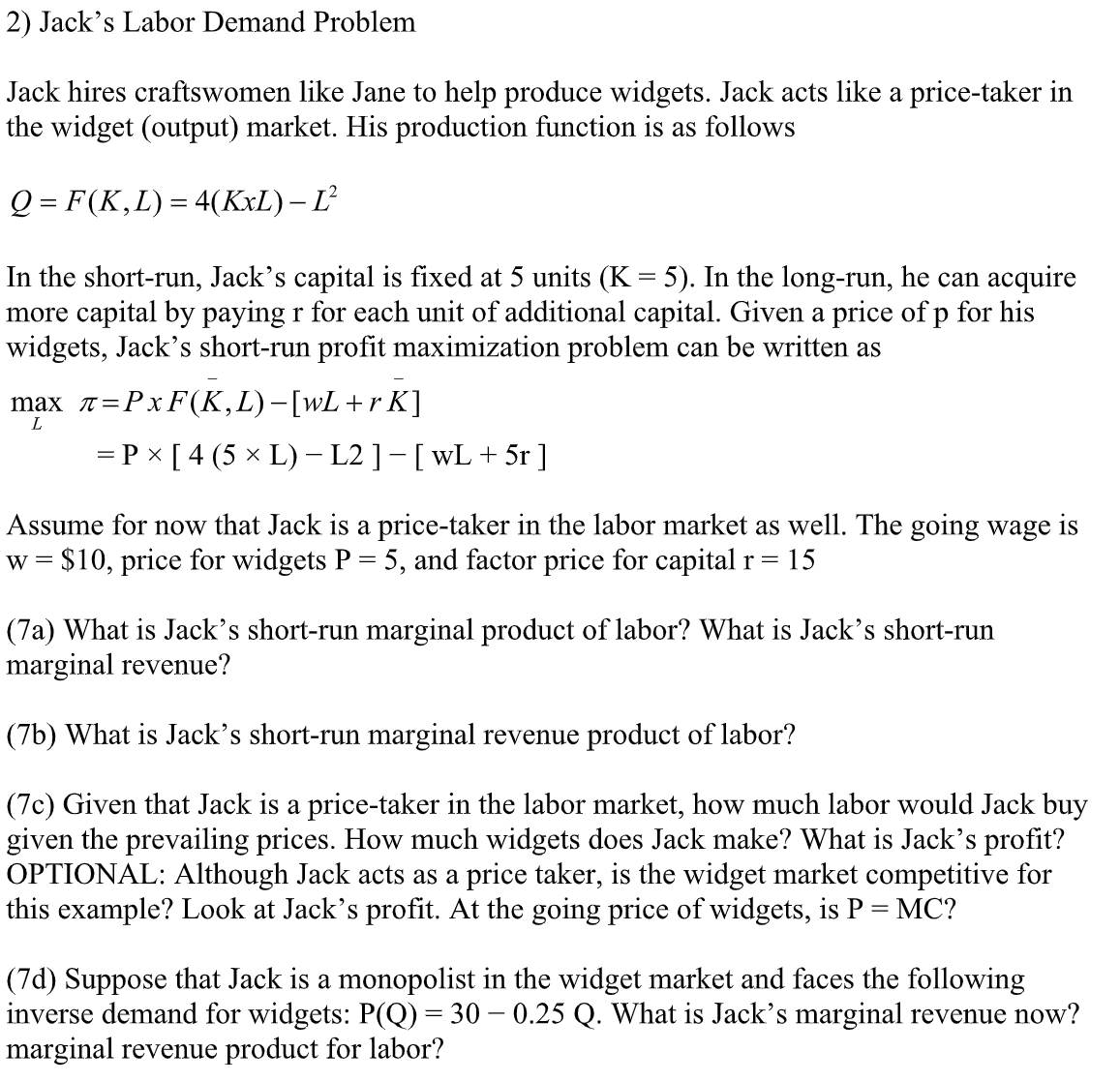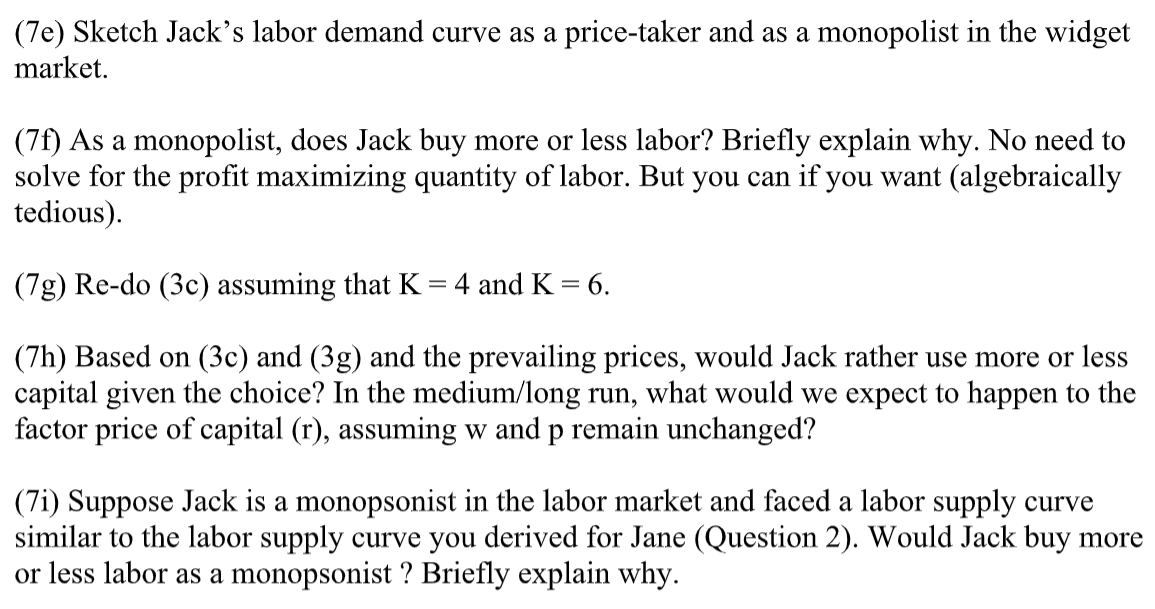2) Jack's Labor Demand Problem Jack hires craftswomen like Jane to help produce widgets. Jack acts like a price-taker in the widget (output) market. His production function is as follows Q = F(K, L) = 4(KxL) - L2 In the short-run, Jack's capital is fixed at 5 units (K = 5). In the long-run, he can acquire more capital by paying r for each unit of additional capital. Given a price of p for his widgets, Jack's short-run profit maximization problem can be written as max n = P x F(K, L) -[wL + r K] L = P x [ 4 (5 x L) - L2 ] - [ wL + 5r ] Assume for now that Jack is a price-taker in the labor market as well. The going wage is w =$10, price for widgets P = 5, and factor price for capital r = 15 (7a) What is Jack's short-run marginal product of labor? What is Jack's short-run marginal revenue? (7b) What is Jack's short-run marginal revenue product of labor? (7c) Given that Jack is a price-taker in the labor market, how much labor would Jack buy given the prevailing prices. How much widgets does Jack make? What is Jack's profit? OPTIONAL: Although Jack acts as a price taker, is the widget market competitive for this example? Look at Jack's profit. At the going price of widgets, is P = MC? (7d) Suppose that Jack is a monopolist in the widget market and faces the following inverse demand for widgets: P(Q) = 30 - 0.25 Q. What is Jack's marginal revenue now? marginal revenue product for labor?(7e) Sketch Jack's labor demand curve as a price-taker and as a monopolist in the Widget market. (7f) As a monopolist, does Jack buy more or less labor? Briey explain why. No need to solve for the prot maximizing quantity of labor. But you can if you want (algebraically tedious). (7g) Re-do (3c) assuming that K = 4 and K = 6. (7h) Based on (3c) and (3 g) and the prevailing prices, would Jack rather use more or less capital given the choice? In the medium/long run, what would we expect to happen to the factor price of capital (r), assuming w and p remain unchanged? (7i) Suppose Jack is a monopsonist in the labor market and faced a labor supply curve similar to the labor supply curve you derived for Jane (Question 2). Would Jack buy more or less labor as a monopsonist ? Briey explain why








